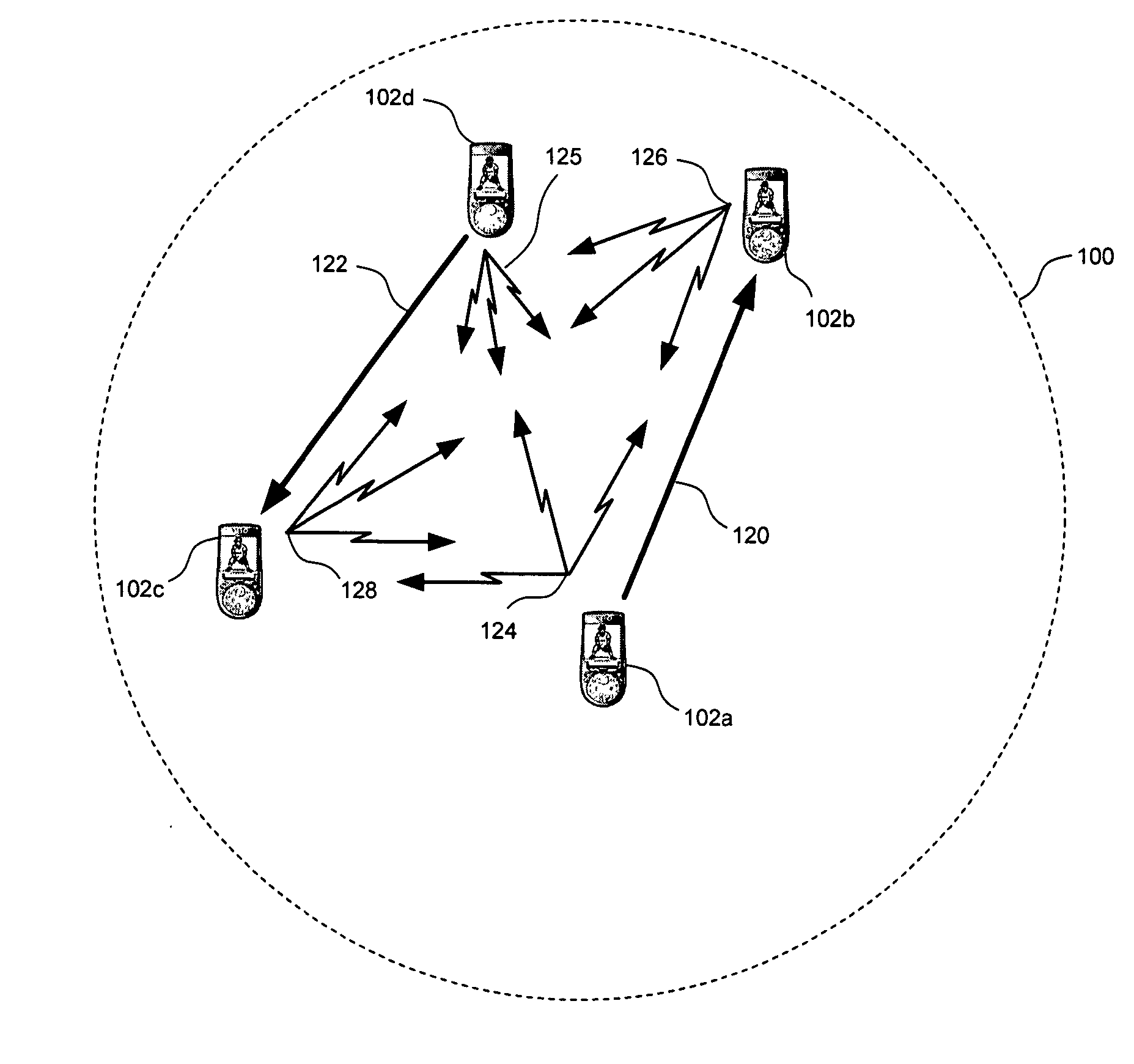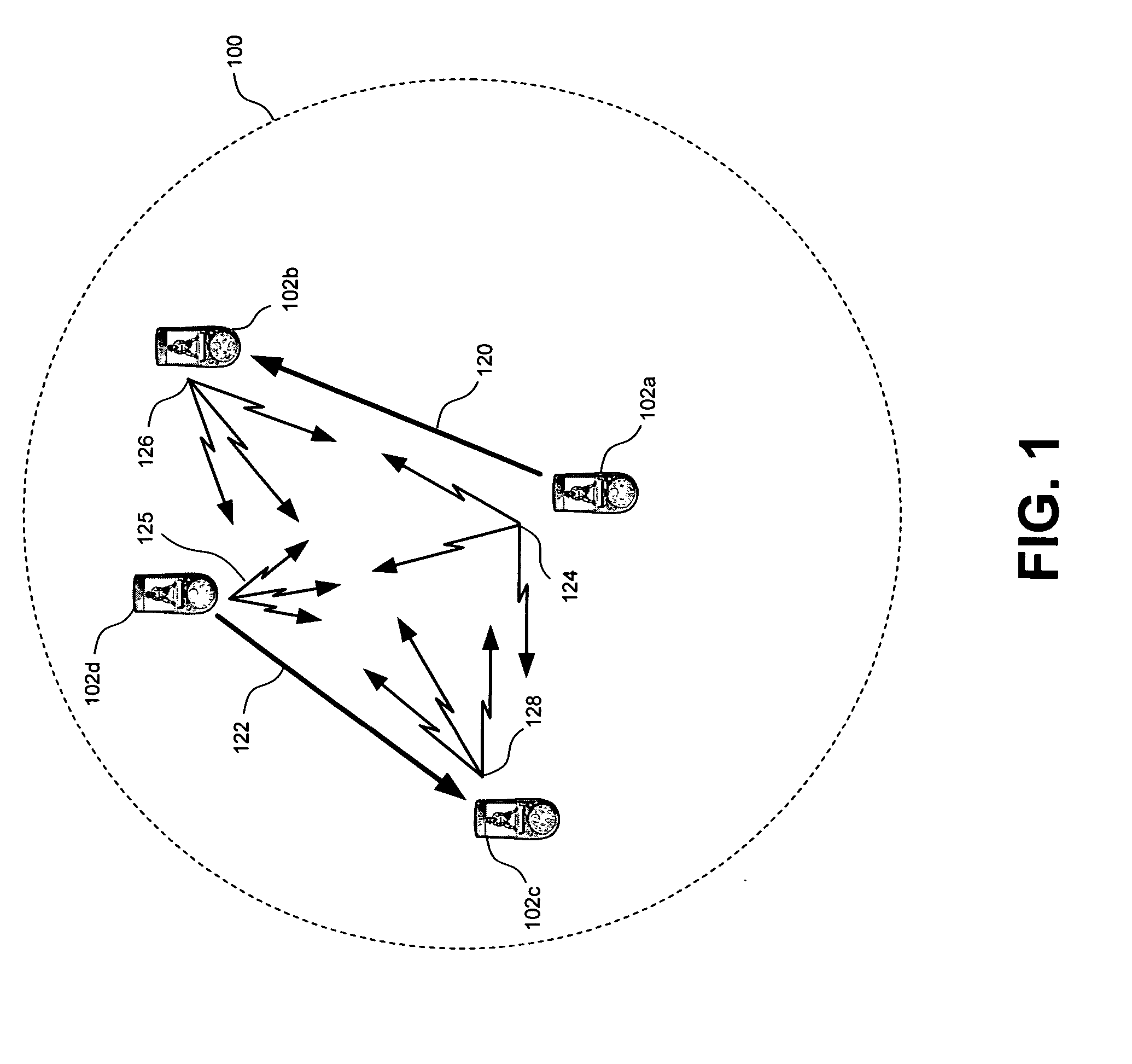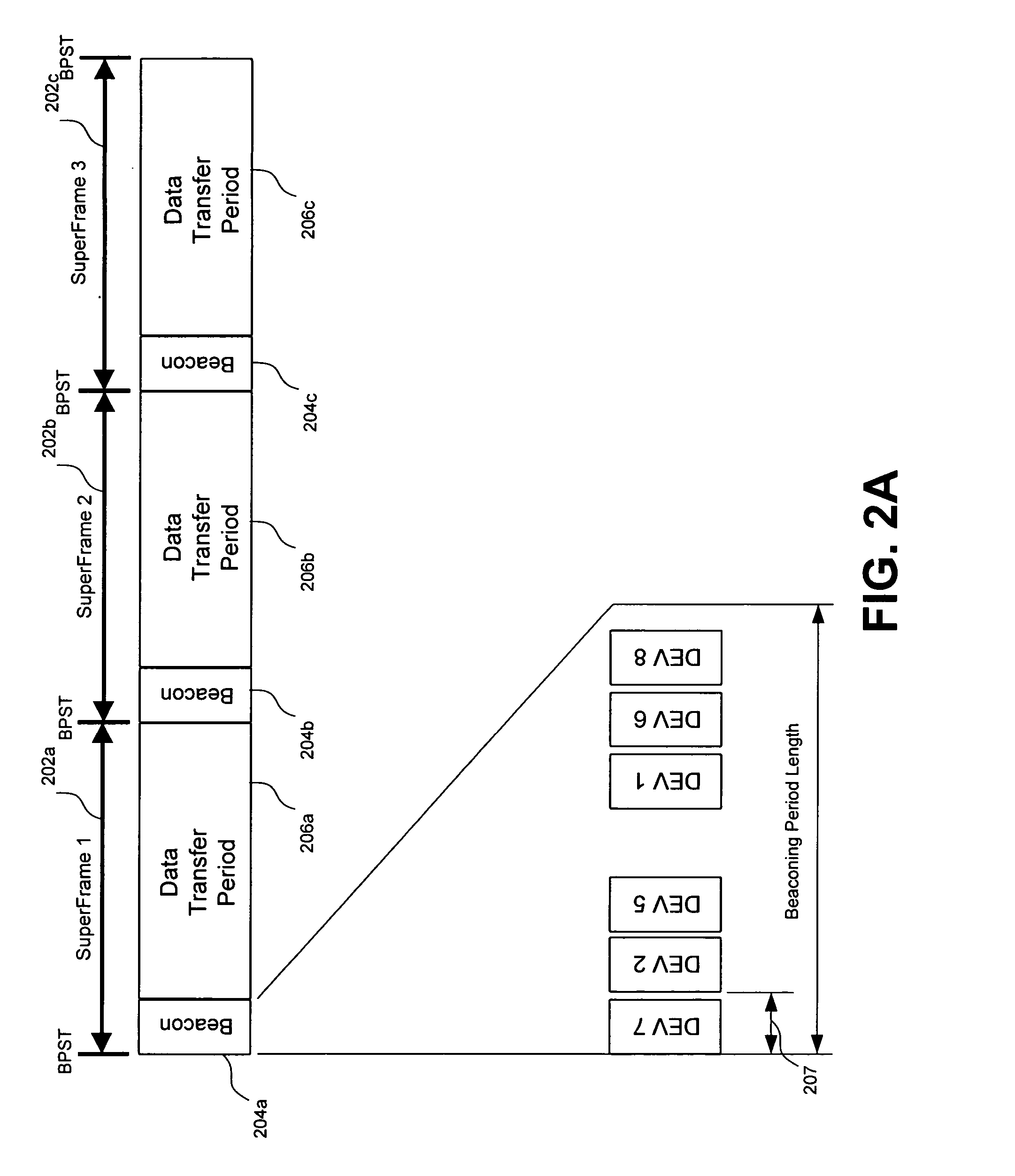Channel change procedures in a wireless communications network
a wireless communications network and channel change technology, applied in the field of wireless communications, can solve the problems of channel-changing devices in jeopardy of losing existing connections as well as basic connectivity under the current wimedia mac specification, and not providing tools for device(s) to search for channel candidates
- Summary
- Abstract
- Description
- Claims
- Application Information
AI Technical Summary
Benefits of technology
Problems solved by technology
Method used
Image
Examples
Embodiment Construction
I. Operational Environment
[0040]FIG. 1 is a diagram of a communications environment in which the techniques of the present invention may be employed. This environment includes a beacon group 100 in which multiple communications devices (DEVs) 102 may exchange wireless transmissions. In particular, FIG. 1 shows a device 102a sending a wireless transmission 120 to a device 102b. Also, FIG. 1 shows a device 102d sending a wireless transmission 122 to a device 102c.
[0041] Transmissions 120 and 122 are shown as being point-to-point communications. However, each of devices 102 periodically sends a transmission referred to as a beacon, which is directed (broadcast) to each device in beacon group 100. For instance, FIG. 1 shows device 102a transmitting a beacon 124, device 102b transmitting a beacon 126, device 102c transmitting a beacon 128 and device 102d transmitting beacon 125. Beacon transmissions are described in greater detail below.
II. Superframe
[0042] Wireless network transmissi...
PUM
 Login to View More
Login to View More Abstract
Description
Claims
Application Information
 Login to View More
Login to View More - R&D
- Intellectual Property
- Life Sciences
- Materials
- Tech Scout
- Unparalleled Data Quality
- Higher Quality Content
- 60% Fewer Hallucinations
Browse by: Latest US Patents, China's latest patents, Technical Efficacy Thesaurus, Application Domain, Technology Topic, Popular Technical Reports.
© 2025 PatSnap. All rights reserved.Legal|Privacy policy|Modern Slavery Act Transparency Statement|Sitemap|About US| Contact US: help@patsnap.com



